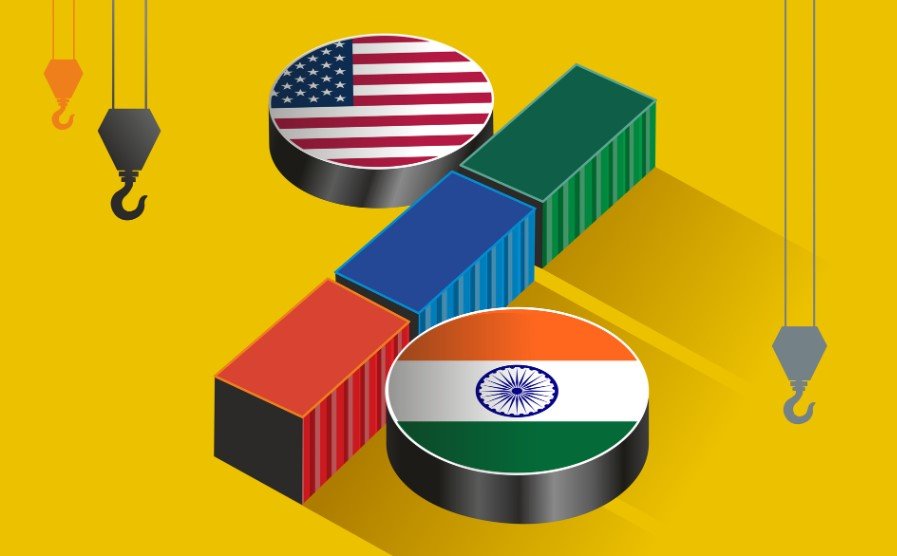India’s monetary policy committee has highlighted US tariffs as a major drag on economic growth while noting a stable inflation path ahead. In the minutes from their August 2025 meeting released on August 20, members stressed the economy’s resilience amid global trade tensions, with the Reserve Bank of India keeping its key repo rate unchanged at 5.50 percent.
MPC Highlights Tariff Risks to Growth
The committee pointed out that evolving global trade issues, especially new US tariffs, pose significant risks to India’s growth outlook for 2025 and beyond. They noted that these tariffs could reduce external demand and slow down export driven sectors.
Despite these challenges, the panel described India’s economy as resilient, projecting a growth rate of around 6.5 percent for the current year. Governor Sanjay Malhotra emphasized that while growth remains solid, uncertainties from tariffs and geopolitical tensions could pull it lower than potential.
Recent data shows India’s GDP expanded by 6.7 percent in the first quarter of 2025, supported by strong domestic consumption and services. However, experts warn that prolonged trade barriers might shave off 0.2 to 0.5 percentage points from annual growth if not addressed.
The US imposed up to 50 percent tariffs on Indian exports starting August 27, citing India’s imports of Russian oil. This follows an initial 25 percent hike earlier in the month, affecting goods worth billions.

Benign Inflation Path Offers Some Relief
On the inflation front, the outlook appears positive, with the committee flagging a benign trajectory that could ease pressure on consumers. Food inflation has moderated more than expected since June, contributing to overall price stability.
Current inflation stands near 3.5 percent, well within the RBI’s target range of 2 to 6 percent. The minutes suggest that lower global commodity prices and tariff induced shifts might even push inflation lower in the coming months.
This stability comes amid global uncertainties, where US tariffs could indirectly lower inflation in India by reducing import costs in some areas. Analysts predict average inflation at 4 percent for 2025, down from earlier estimates.
However, the panel cautioned against complacency, noting potential spillover effects from trade disruptions on supply chains.
RBI Maintains Neutral Stance on Rates
The Reserve Bank of India decided to hold the repo rate steady at 5.50 percent in early August, after cumulative cuts of 100 basis points earlier in 2025. All six MPC members voted for a neutral policy stance to allow flexibility in responding to domestic and international changes.
This pause reflects a wait and see approach, as the bank assesses the full impact of US tariffs on growth and prices. Officials believe the current rate level supports recovery without fueling inflation.
Looking ahead, some economists expect possible rate cuts later in 2025 if tariff effects lead to slower growth and subdued inflation. For instance, projections indicate two 25 basis point reductions by year end, bringing the repo rate to 5 percent.
Sector Wise Impacts of US Tariffs
US tariffs are set to hit specific Indian industries hard, potentially affecting jobs and exports. Key sectors include textiles, pharmaceuticals, and electronics, which account for a large share of shipments to the US.
- Textiles and apparel: Could see a 20 to 30 percent drop in exports, impacting millions of workers in labor intensive areas.
- Pharmaceuticals: Might face moderate effects due to essential drug exemptions, but overall volumes could decline by 10 percent.
- Electronics and machinery: High exposure, with potential revenue losses up to 15 percent for small and medium enterprises.
These disruptions highlight the need for diversification in trade partners and boosting domestic manufacturing.
Beyond direct hits, second order effects like a weaker rupee and volatile foreign investments could emerge. The rupee has depreciated by about 5 percent against the dollar since the tariff announcements, adding to import costs for energy and raw materials.
Expert Views and Broader Economic Context
Analysts from global firms like S&P Global Ratings maintain that India’s long term growth story remains intact, driven by reforms and robust domestic demand. They project annual GDP growth at 6.8 percent over the next three years, despite short term tariff pressures.
Finance Secretary statements echo this, estimating a limited direct GDP impact of 0.2 to 0.5 percentage points. This resilience stems from India’s domestically oriented economy, which shields it from severe external shocks.
In comparison, recent events like the US Federal Reserve’s rate cuts in 2025 have influenced global markets, but India’s focus on internal reforms such as infrastructure spending continues to bolster confidence.
| Aspect | Current Status | Projected Impact from Tariffs |
|---|---|---|
| GDP Growth | 6.5% for 2025 | Potential reduction of 0.2-0.5% |
| Inflation Rate | Near 3.5% | Could decline further to 4% average |
| Exports to US | $87 billion annually | Possible fall by 10-20% in affected sectors |
| Repo Rate | 5.50% | May see cuts to 5% by end-2025 |
Global Trade Tensions and India’s Response
India has avoided immediate retaliation against US tariffs, focusing instead on negotiations and strengthening ties with other markets like Europe and Southeast Asia. Government officials stress that most Indian exports to the US may remain exempt or minimally affected.
This approach aligns with broader efforts to enhance economic reforms, including investments in technology and renewable energy, which could offset tariff losses over time.
As trade dynamics evolve, India’s strategy emphasizes self reliance and diversification to maintain steady growth.
What are your thoughts on how US tariffs might shape India’s economy? Share this article and comment below to join the discussion.
